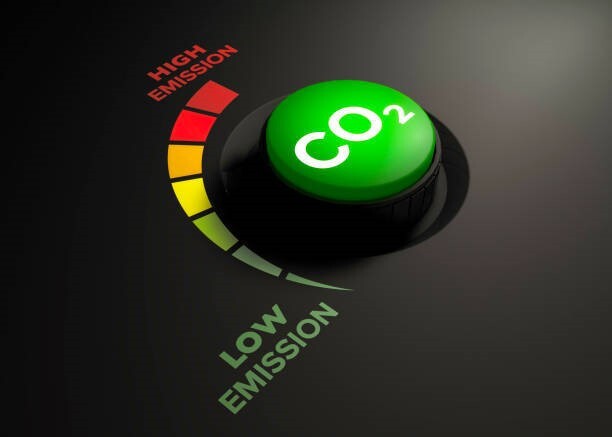

Aluminium is pivotal in advancing modern technologies to facilitate the transition to sustainable energy. However, its significance comes with a caveat: the substantial emission of greenhouse gases (GHGs) on a global scale.

According to the International Energy Agency (IEA), aluminium production alone contributes approximately 3 per cent of GHG emissions, totalling around 270 tonnes. As the world shifts towards cleaner energy sources, the demand for aluminium is poised to surge dramatically by up to 40 per cent by 2030.
In recent years, a global movement towards carbon neutrality has gained momentum, with countries worldwide revising their policies and strategies to achieve these goals. This movement is accompanied by a dynamic surge in electric vehicle adoption and a thriving investment landscape for renewable energy ventures. Countries are leading these investments, not just to enhance energy independence, but to shape a more sustainable future, where innovation and environmental stewardship go hand in hand on the path to progress. Here are some of the top CO2 reduction initiatives being implemented within the industry:
European Commission’s decarbonisation deal
According to analysis by the IAI, primary aluminium production in Europe hit approximately 6.73 million tonnes in 2023. This reflected a 3.95 per cent decrease from the previous year's output of 6.99 million tonnes, primarily attributed to persistently high energy costs that have plagued the European primary aluminium market for over a year.
On February 6, 2024, the European Commission unveiled a comprehensive impact assessment outlining potential pathways to achieve the European Union's ambitious goal of becoming climate-neutral by 2050. Dubbed 'Securing our future: Europe's 2040 climate target and path to climate neutrality by 2050 building a sustainable, just and prosperous society.'
This comprehensive plan outlines the necessary climate and energy policy framework post-2030, aiming for an ambitious greenhouse gas (GHG) emissions reduction target of 90 per cent by 2040 compared to 1990 levels.
Achieving a 90 per cent emissions reduction by 2040 necessitates fulfilling several enabling prerequisites. Central to this endeavour is the thorough implementation of existing legislation to reduce emissions by a minimum of 55 per cent by 2030.
Meeting the proposed 90 per cent target will require a multifaceted strategy, blending emissions reductions with carbon removal tactics. This includes embracing carbon capture and storage (CCS) technologies on a broad scale, coupled with utilizing captured carbon in various industrial processes. Central to this effort is the EU's Industrial Carbon Management strategy, which will be instrumental in nurturing the growth of CO2 supply chains and building the necessary infrastructure for CO2 transport.
Hindalco's Net Zero goals
Hindalco Industries, a key player in the aluminium industry, is doubling down on its commitment to sustainability. Satish Pai, the Managing Director, has set ambitious goals to reach the first phase of the interim greenhouse gas (GHG) reduction target well before 2030. By 2030, Hindalco plans to fulfil over 30 per cent of its energy needs from renewable sources, driven by the completion of the initial phase of the pumped hydro project.
Looking further ahead, the company aims to achieve carbon neutrality by 2050. Pai emphasises the significance of the pumped hydro project, foreseeing a significant reduction in carbon emissions. The successful execution of this project could accelerate Hindalco's progress towards its energy mix targets, possibly even exceeding them ahead of schedule.
"Once the first phase of the pumped hydro project comes on stream, we believe it would pave the way for using this technology across our smelters and achieving 30 per cent of our energy mix from renewable sources by 2030. This and our other sustainability projects might even help us achieve our target a couple of years earlier," Pai analysed.
Pioneering carbon capture, Hindalco is experimenting with advanced mineralisation to sequester CO2. The company is engaged in projects aiming to transform captured carbon into construction aggregates or ready-mix concrete.
Hindalco's overseas subsidiary, Novelis, showcases a substantial commitment by recycling 82 billion used beverage cans, which form 61 per cent of the material used in production. Collaborations with leading auto OEMs project a significant reduction in carbon emissions.
Hydro’s move towards zero CO2 emission
Hydro is taking significant strides towards achieving zero CO2 emissions in aluminium production by implementing emission-free plasma technology in the Sunndal cast house. Supported by soft funding from the Norwegian Government, this innovative project is poised to revolutionise hard-to-abate industries globally. Traditionally, re-melting aluminium into new products is energy-intensive, requiring high temperatures typically fuelled by fossil energy sources like natural gas. However, Hydro is pioneering a breakthrough with new plasma technology, enabling the electrification of this process.
By leveraging renewable energy sources, the same ones powering Hydro's primary smelters, the company aims to transform aluminium re-melting into a more sustainable and environmentally friendly process. This development aligns with Hydro's broader commitment to reducing its carbon footprint and advocating cleaner practices within the aluminium industry.
In pursuit of its global decarbonisation objectives, Hydro is allocating R$1.6 billion to initiatives to reduce carbon emissions in its alumina production and bauxite extraction operations in Pará. The company aims to achieve a 10 per cent reduction in carbon emissions across all operations worldwide by 2025 and a 25 per cent reduction by 2030 by decarbonising its processes.
Carlos Neves, Vice President of Operations, has outlined a roadmap for decarbonisation in bauxite and alumina production until 2050. The initial stage of this roadmap aims to reduce emissions by 16 per cent, thereby contributing to the company's broader target of a 10 per cent reduction by 2025. Several projects have been developed along the decarbonisation pathway to achieve this, with particular emphasis on the alumina plant located in Barcarena (PA).
The Norwegian Government, alongside industry associations and trade unions, has reached a consensus on the future trajectory of the Norwegian CO2 compensation scheme, effective from 2024 to 2030. This agreement involves key stakeholders, including the Norwegian Government, Norsk Industri, Energi & Forbundet for ledelse og teknikk, Fellesforbundet, LO, and NHO. It establishes an annual cap of NOK 7 billion for CO2 compensation to eligible industries.
Carbfix’s ground-breaking method for storing CO2 emissions
In the vast, untouched landscape surrounding Iceland's Hellisheidi geothermal power plant, Olafur Teitur Jonsson is introducing a revolutionary method for storing CO2 emissions, a development that is capturing the attention of the world. Inside a humble geodesic dome owned by the Icelandic startup Carbfix, CO2 captured from the nearby power plant is blended with groundwater and injected into the volcanic basalt rock below, a process that could potentially reshape the global approach to CO2 storage.
What sets Carbfix's approach apart is its remarkable efficiency. In a mere two years, almost 95 per cent of the CO2 injected into the power station has solidified into rock, a process that typically takes nature thousands of years. This rapid CO2 mineralization, made possible by water as a carrier, is a truly awe-inspiring advancement.
Carbfix accelerates this natural process and eliminates the need for continuous monitoring to prevent CO2 leaks. Furthermore, it severs the link between CO2 storage and the contentious oil and gas industry, establishing a new benchmark for climate action.
Unlike conventional carbon capture and storage (CCS) methods, which often entail injecting captured CO2 into depleted onshore oil and gas fields to enhance oil recovery, Carbfix's approach stands out. Rather than merely storing CO2, they transform it into a mineral form. This technique boasts a smaller land footprint and can be conveniently situated near other industries, providing versatility and environmental advantages.
Fives’ CO2 capture solutions
With over 60 years of experience in capturing and processing industrial emissions, Fives, an international leader in industrial engineering, possesses unique expertise crucial for advancing greener aluminium production. For more than two decades, Fives has steadfastly committed to decarbonizing the industry.
Aluminium Dunkerque and Trimet in St. Jean de Maurienne will collaborate to leverage their expertise in developing this technology at their respective sites. This consortium, which comprises the foremost experts in the field, is dedicated to implementing an innovative process to reduce direct CO2 emissions (excluding energy sources) from primary aluminium production by 50 per cent by 2030.
Rio Tinto, a major global aluminium producer renowned for its expertise in the electrolysis process, is spearheading a project integral to the France 2030 plan. This initiative is set to be imminently presented to the French Environment and Energy Management Agency (ADEME).
As a crucial step towards comprehensive decarbonization, the project encompasses two primary phases at the Trimet St Jean de Maurienne and Aluminium Dunkerque facilities:
From 2024 to 2027: Experimentation in test pots and the installation of prototypes.
Commencing from 2028: Industrial-scale deployment of the technology across select sites, aiming to achieve a 50 per cent reduction in emissions by 2030. Central to this effort is using carbon capture technologies to capture emissions directly from the primary aluminium production process within the pots.
The project's overarching goal is to pioneer, prototype, and advance carbon capture technology tailored explicitly for the aluminium sector. While carbon capture processes have succeeded in various industrial sectors, such as petrochemicals and thermal power stations, their application in aluminium production remains in the industrial research phase.
Ball and Coca-Cola
Ball Beverage Packaging and Coca-Cola Europacific Partners (CCEP) have teamed up to conduct a trial involving hydrotreated vegetable oil (HVO) in part-fueled vehicles in the UK. This twelve-month trial, commencing in October, aims to slash supply chain CO2 emissions by approximately 300 tonnes annually.
The trial will utilize a blend of HVO and diesel fuel to power approximately 5,000 deliveries to the CCEP site in Wakefield, West Yorkshire, UK. Menzies Distribution, one of Ball's logistics partners in the UK, is supporting this partnership.
HVO represents a sustainable energy alternative with the potential to diminish the carbon footprint associated with supply chain transportation significantly. By integrating HVO into their operations, companies can reduce supply chain transportation-related carbon emissions by up to approximately 90 per cent, from can production to final customer delivery.
Moreover, HVO can be seamlessly stored alongside diesel in local tanks, allowing for a flexible mix of fuel types across the fleet. This approach ensures ease of adoption and offers a pathway to reducing CO2 emissions through a blend of HVO and diesel without necessitating any modifications to existing engines or additional vehicle maintenance.
Conclusion
Governments and top aluminium producers from different countries, global organisations, and non-profit entities have all joined hands to innovate and implement strategies to minimise the carbon footprint and bring about sustainability in the aluminium industry. Almost every region has launched dedicated projects with a common goal in mind. However, the success rate of these projects will vary depending on the region’s socio-economic climate. Not all measures are viable for all countries, companies and economies.
Responses








